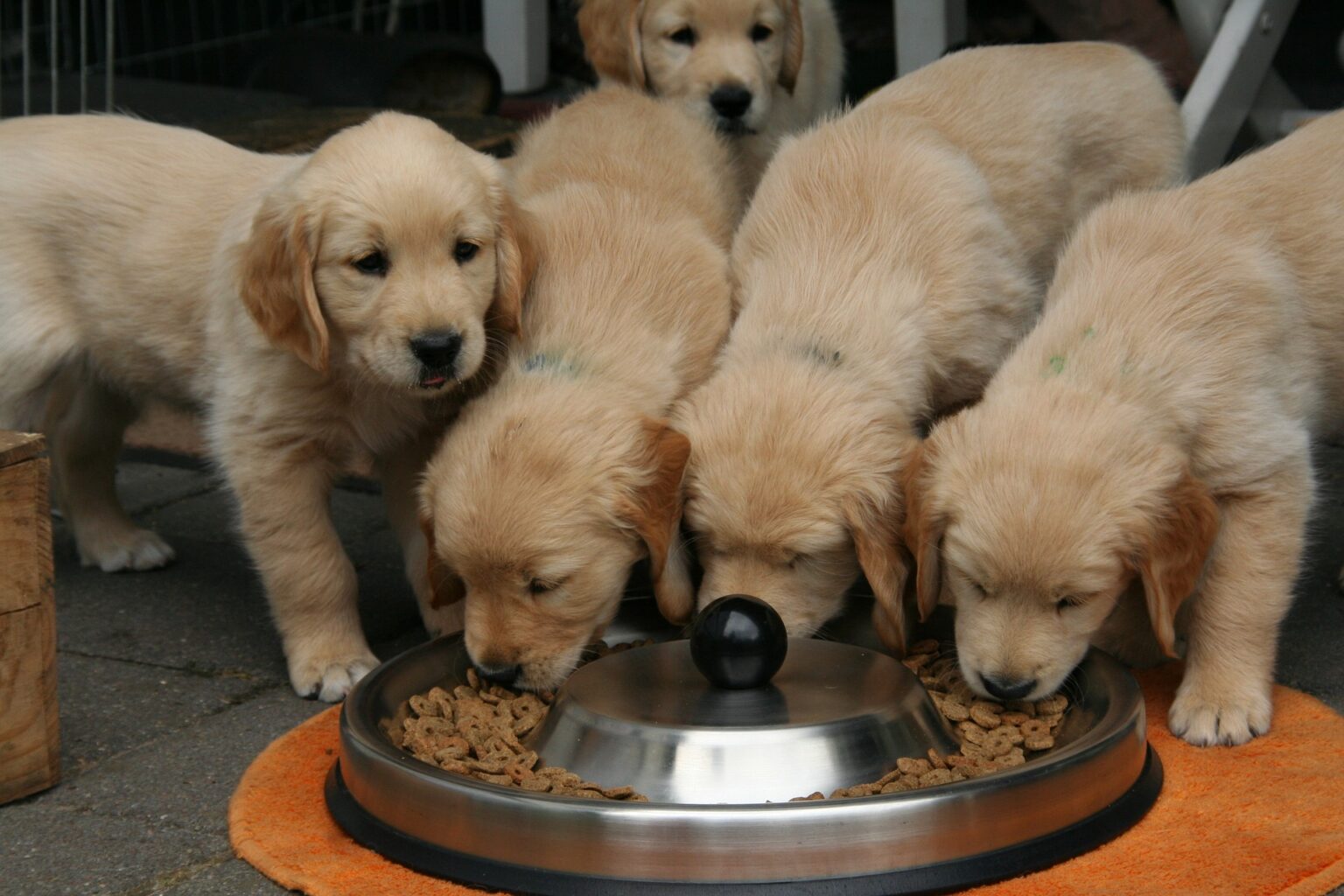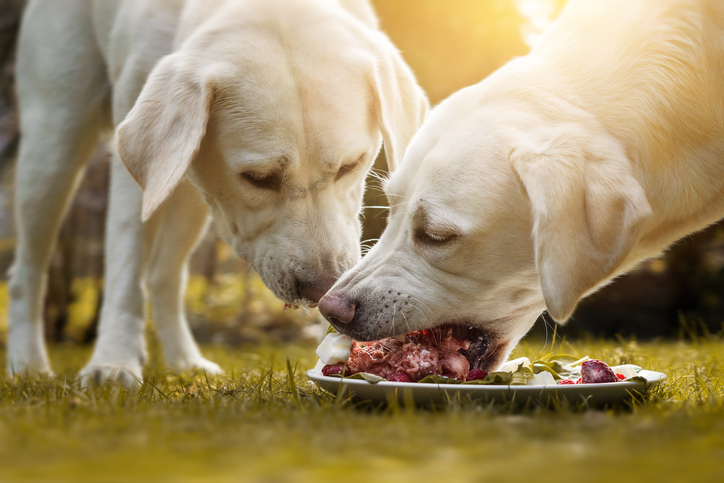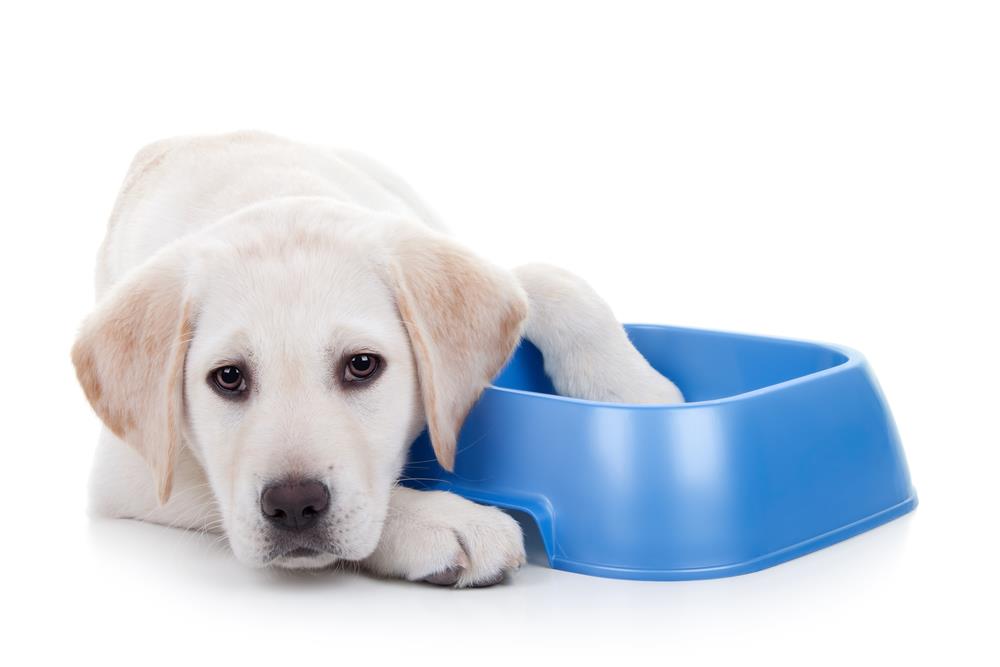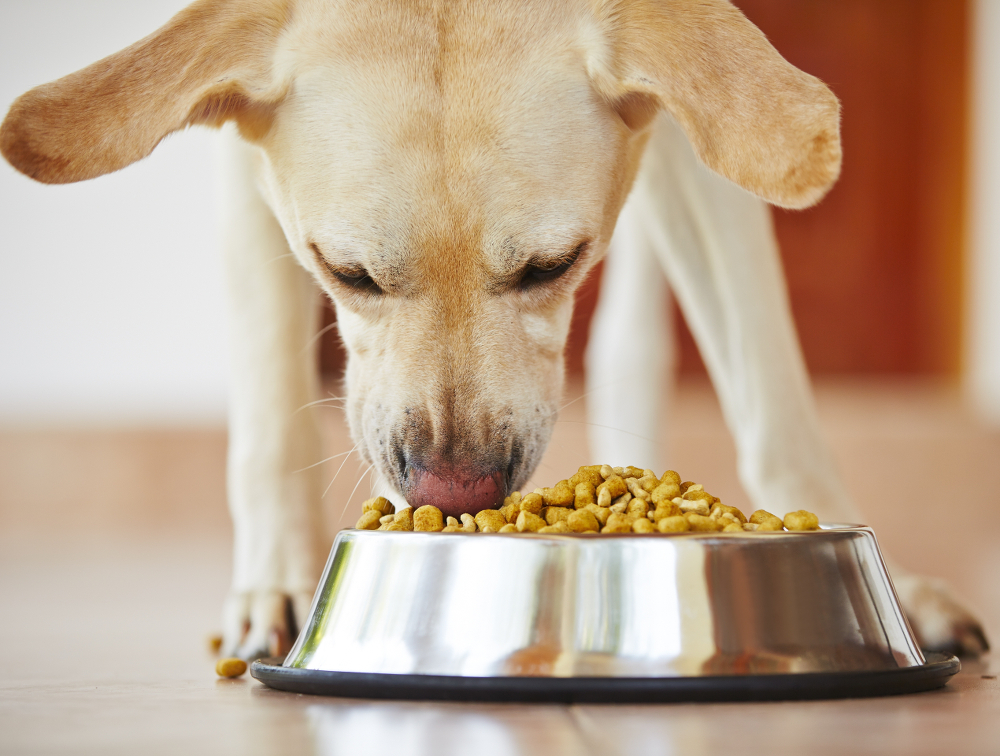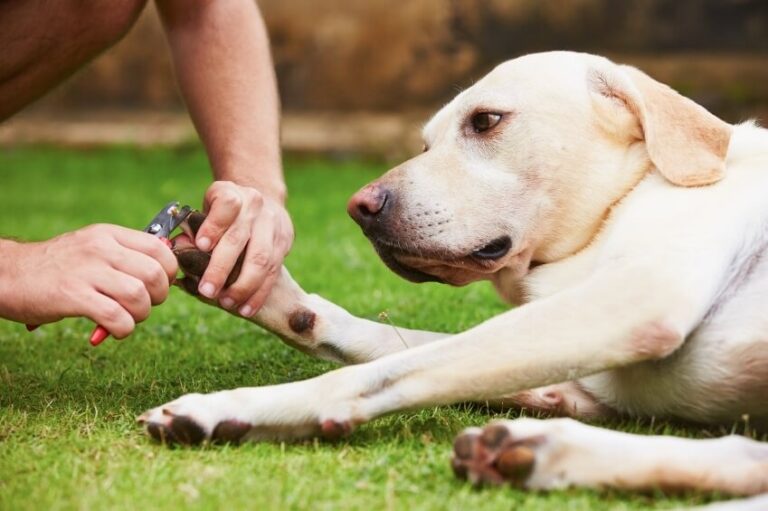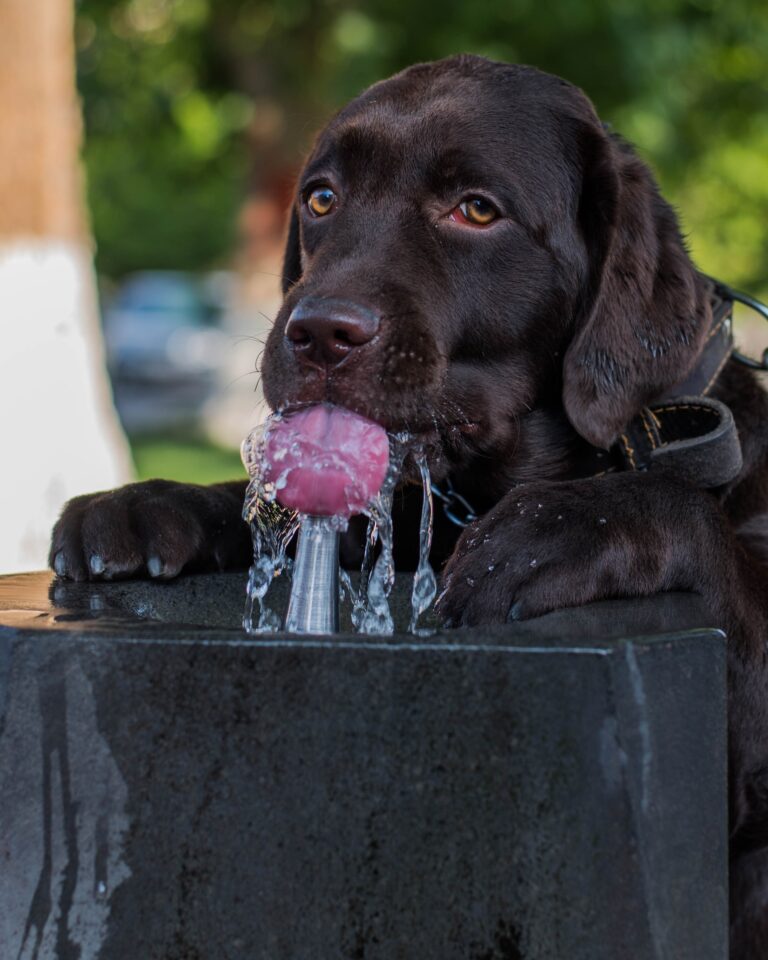When to Switch From Puppy Food To Dog Food Labrador
One of the most important aspects of caring for our furry friends is ensuring they receive proper nutrition to grow and thrive. But one question that might be on your mind is when to switch from puppy food to dog food Labrador. It’s a crucial decision that can impact their long-term health and well-being.
In this article, we’ll delve into the importance of proper nutrition for Labradors and discuss the key factors to consider when transitioning from puppy to adult dog food. By understanding the unique nutritional needs of Labradors and recognizing the right time to make the switch, you’ll be better equipped to support your beloved pet throughout its growth and development.
So, let’s get started on this journey together and help our Labradors live their happiest, healthiest lives.
Understanding The Nutritional Needs of Labradors
Before we dive into the specifics of when to switch Lab puppy food to dog food, it’s essential to understand the unique nutritional needs of Labradors. As a fellow Labrador owner, I’ve spent countless hours researching and consulting with experts to ensure my furry friend receives the best nutrition.
In this section, I’ll share my knowledge about their unique nutritional requirements and the differences between puppy and adult dog food.
✔The Unique Nutritional Requirements of Labradors
Labrador Retrievers are an energetic and athletic breed known for their love of exercise and play. To support their active lifestyles and maintain their muscular builds, Labradors require a diet rich in high-quality protein sources. For example, my Labrador, Max, thrives on a diet that includes lean meats such as chicken, fish, and beef.
In addition to protein, Labradors need healthy fats, like omega-3 and omega-6 fatty acids, which support brain development, maintain a healthy coat, and provide energy. I’ve noticed a significantly improved Max’s coat since incorporating foods rich in these essential nutrients.
Labradors also require a balanced intake of vitamins and minerals to support their immune system, bone health, and overall well-being. For instance, calcium and phosphorus are crucial for strong bones and teeth, while vitamins A and E help maintain healthy skin and eyes.
✔Puppy Food vs. Adult Dog Food: Nutrient Differences
Understanding the differences between Labrador puppy and adult dog food is vital when planning the transition for your Labrador. Here’s a breakdown of how they differ in terms of nutrients:
Protein Content: Puppy food generally contains higher protein levels than adult dog food to support muscle growth and development. For example, Max’s puppy food contained around 28% protein, while his adult dog food had about 25% protein.
Calorie Density: Lab puppies have higher energy requirements due to their rapid growth and boundless energy. As a result, puppy food is more calorie-dense than adult dog food. When Max was a puppy, I had to ensure he consumed enough calories to fuel his growth and activity levels.
Fat Content: Puppy foods typically has a higher fat content to provide the necessary energy for growth and play. As dogs mature, their energy needs decrease, so adult dog food contains less fat to help maintain a healthy weight.
Vitamins and Minerals: Petty and adult dog food contain essential vitamins and minerals. However, the proportions may vary. For example, Lab puppy food often contains higher calcium and phosphorus levels to support bone growth. As Max transitioned to adult dog food, I ensured his new diet provided all the necessary nutrients to keep him healthy.
When to Switch From Puppy Food To Dog Food Labrador: Key Signs
Now that we’ve explored the nutritional needs of Labradors and the differences between puppy and adult dog food, it’s time to discuss how to determine when your Labrador is ready for the transition. As a Labrador owner, I know firsthand that recognizing these key signs can be challenging but crucial for your dog’s health.
In this section, I’ll share my experience and insights on the typical age range for transitioning, growth indicators, and changes in energy levels that signal your Labrador’s readiness for adult food.
🥣Age: The Typical Age Range for Transitioning (12-18 Months)
The general rule of thumb is that Labradors should begin transitioning to adult dog food between 12 and 18 months of age. However, this timeline may vary depending on your dog’s size, activity level, and overall health. When Max reached his first birthday, I consulted with our veterinarian to determine if he was ready for the transition. They advised me to wait a few months to ensure he received the nutrients for optimal growth and development.
🥣Growth: Indicators That Your Labrador Has Reached Its Adult Size
One of the most reliable ways to determine if your Labrador is ready for adult food is by assessing their growth. When your dog has reached adult size, their growth rate will plateau, indicating that they no longer require the higher protein and calorie content in puppy food. You can only feed puppy food and wet food to your dog if they’re still small.
To track Max’s growth, I regularly measured his height and weight and referred him to a Labrador growth chart to ensure he progressed as expected. Once his growth stabilized, I knew it was time to consider switching to adult dog food.
🥣Energy Levels: Changes in Activity Levels That Signal Readiness for Adult Food
As your Labrador matures, you may notice a slight decrease in their energy levels. This change is a natural part of the aging process and can indicate that it’s time to transition to adult dog food. When Max was a Labrador puppy, he had boundless energy and required frequent play sessions and walks to burn off his excess energy. As he grew older, I noticed his energy levels gradually decreased, and he required less intense exercise to stay happy and healthy. This activity level change signaled that Max was ready to transition to adult dog food.
The Transition Process: How to Gradually Introduce Adult Food
Transitioning your Labrador puppies from puppy food to adult dog food is an important milestone in their life, but it’s crucial to approach this change with care.
🍗Gradual Transition: Ensuring Your Labrador’s Digestive Comfort
A sudden change in your Labrador’s diet can lead to digestive issues such as diarrhea, vomiting, or loss of appetite. To prevent these problems, gradually introducing adult dog food into their diet is essential for 7 to 10 days. This slow transition allows your dog’s digestive system to adjust to the new food and helps minimize the risk of any adverse reactions.
🍗Suggested Schedule and Proportions for Mixing Puppy and Adult Food
Ensure a smooth transition from puppy food to adult dog food by following a gradual schedule that combines both types of food in gradually changing proportions. Here’s an ideal feeding schedule you can use when transitioning your Labrador:
- Days 1-3: Mix 25% adult food with 75% puppy food
- Days 4-6: Mix 50% adult food with 50% puppy food
- Days 7-9: Mix 75% adult food with 25% puppy food
- Day 10 onwards: 100% adult food
Following this feeding guide gives your dog’s digestive system ample time to adjust to the new food while still providing the necessary nutrients during the transition period. Remember that every dog is unique, and you may need to adjust the schedule slightly based on your Labrador’s specific needs and reactions.
🍗Tips for Monitoring Your Dog’s Reactions During the Transition
As you gradually introduce adult dog food to your Labrador’s diet, monitoring their reactions is crucial to ensure a comfortable and successful transition. Here are some tips to help you keep an eye on your dog’s progress:
Stool Consistency: Check your dog’s stool daily to ensure it remains firm and well-formed. Loose or watery stools can indicate that the transition is happening too quickly or that your dog is not tolerating the new food well.
Appetite: Keep track of your Labrador’s appetite to ensure your dogs eat the appropriate amount during the transition. A sudden loss of appetite could signal a problem with the new food or suggest that the transition is happening too quickly.
Weight: Monitor your dog’s weight throughout the transition process. Rapid weight gain or loss could indicate that the new food is not meeting your dog’s nutritional needs or that the transition is causing digestive issues.
Energy Levels: Pay attention to your Labrador’s energy levels during the transition. A significant decrease in energy could suggest your dog is not receiving the necessary nutrients from the new food. In contrast, an increase in energy could indicate that they consume too many calories.
Overall Health: Keep an eye on your dog’s overall health, including their coat condition, skin health, and general demeanor. Any significant changes could signal a problem with the new food or an issue with the transition process.
By closely monitoring your Labrador’s reactions during the transition from puppy food to adult dog food, you can make any necessary adjustments and ensure a smooth, comfortable change for your furry friend.
Choosing the Right Adult Dog Food for Your Labrador
Selecting the right adult dog food for your Labrador is a crucial decision that can significantly impact their long-term health and well-being.
🍚Factors to Consider When Selecting an Adult Dog Food
When selecting an adult dog food for your Labrador, it’s essential to consider the following factors to ensure you’re providing them with the best possible nutrition:
Ingredients: Look for high-quality protein sources (e.g., chicken, fish, or beef) as the primary ingredient in your dog’s food. Healthy fats and essential vitamins and minerals should also support your dog’s overall health.
Quality: Opt for dog food from high-quality, natural ingredients without artificial preservatives, colors, or flavors. A higher-quality food may cost more upfront, but it can save you money on vet bills in the long run by promoting better health for your Labrador.
Brand Reputation: Research the reputation of the dog food brands you’re considering. Look for brands with a history of producing high-quality, safe products and positive customer reviews. When Max transitioned to adult dog food, I spent hours researching various brands and reading customer testimonials to find the perfect fit.
🍚Recommendations for Labrador-Specific Adult Dog Food Options
When selecting a Labrador-specific adult dog food, it’s essential to consult with your veterinarian for personalized recommendations based on your dog’s unique needs. However, here are some popular options that other Labrador owners have had success with:
Royal Canin Labrador Retriever Adult Dry Dog Food: This large breed adult-specific formula meets the nutritional needs of adult Labradors, with targeted nutrients to support bone and joint health, healthy skin and coat, and digestive health.
Blue Buffalo Wilderness High Protein Dry Food: This high-protein, grain-free option features real meat as the first ingredient and includes antioxidant-rich fruits and vegetables to support your Labrador’s overall health.
Hill’s Science Diet Adult Large Breed Dry Dog Foods: This large breed puppy formula provides a balanced blend of high-quality protein, healthy fats, and essential vitamins and minerals to support your Labrador’s well-being.
Monitoring Your Labrador’s Health After the Transition
Once you’ve successfully transitioned your Labrador from puppy food to adult dog food, it’s important to continue monitoring their health to ensure they’re thriving on their new diet.
👩🏻⚕️Regular Vet Check-ups: Ensuring Your Labrador’s Optimal Health
Scheduling regular vet check-ups is crucial for monitoring your Labrador’s overall health, especially after transitioning to adult dog food. These visits allow your veterinarian to assess your dog’s weight, body condition, coat health, and other vital signs to ensure they receive the appropriate puppy nutrition from their new diet.
When Max transitioned to adult dog food, I scheduled a vet appointment within a few weeks to evaluate his health and confirm that the new food met his nutritional needs. Based on the vet’s assessment, we made minor adjustments to Max’s diet, such as adding supplements or modifying portion sizes, to optimize his health.
In addition to monitoring your dog’s health during the initial transition period, it’s essential to maintain regular vet check-ups throughout their life. Annual wellness exams are generally recommended for adult Labradors, though more frequent visits may be necessary depending on your dog’s age, health concerns, or specific needs.
👩🏻⚕️Signs That Your Labrador Is Thriving on Their New Diet
After transitioning your Labrador to adult dog food, monitoring their health and well-being is important to ensure they’re thriving on their new diet. Here are some key signs to look for that indicate your furry friend is adapting well to the change:
Healthy Weight: Maintaining a healthy weight is crucial for Labradors, as obesity can lead to various health issues. If your dog consumes the appropriate number of calories and maintains a stable weight on their new diet, it indicates they’re thriving.
Good Energy Levels: A well-balanced diet should give your Labrador the energy they need to enjoy daily activities. If your dog remains active and engaged after transitioning to adult dog food, it’s a positive sign that its nutritional needs are being met.
Shiny Coat and Healthy Skin: A high-quality adult dog food should promote a shiny coat and healthy skin in your Labrador. If you notice improvements in your dog’s coat condition or a reduction in skin issues (e.g., itching, flaking), it’s a sign that their new diet provides the necessary nutrients for optimal skin and coat health.
Well-Formed Stools: Monitoring your dog’s stool consistency is another way to assess their health and well-being. If your Labrador consistently produces well-formed stools after transitioning to adult dog food, it indicates that its digestive system adapts well to the new diet.
Strong Immune System: A nutritious adult dog food should support your Labrador’s immune system, helping them ward off illness and maintain overall health. If your dog experiences fewer health issues and seems more resilient after transitioning to their new diet, it’s a sign that its immune system benefits from the change.
👩🏻⚕️Potential Issues to Watch for After Transitioning to Adult Dog Food
While many Labradors adapt well to their new adult dog food, it’s essential to remain vigilant for potential issues that may arise after the transition. Here are some common concerns to watch for and how to address them:
Weight Gain: If your Labrador begins to gain weight rapidly after transitioning to adult dog food, it may be a sign that they’re consuming too many calories or not receiving the appropriate balance of nutrients. In this case, consult your veterinarian to determine if you should adjust portion sizes or consider an alternative food option tailored to your dog’s needs.
Allergies: Some dogs may develop allergies or sensitivities to certain ingredients in their new adult dog food. Symptoms can include itching, skin irritation, ear infections, or gastrointestinal issues (e.g., diarrhea, vomiting). If you suspect your Labrador is experiencing an allergic reaction or sensitivity, consult your veterinarian to identify the cause and find a suitable alternative diet.
Digestive Issues: If your Labrador experiences ongoing diarrhea, constipation, or other digestive problems after transitioning to adult dog food, it may indicate that their new diet is not agreeing with their system. In this situation, consult your veterinarian to determine if an alternative food option or additional supplements may help alleviate these issues.
Decreased Energy Levels: If you notice a significant decrease in your Labrador’s energy levels after transitioning to adult dog food, it may indicate that they’re not receiving the necessary nutrients to support their activity levels. Consult with your veterinarian to discuss potential adjustments to their diet or consider alternative food options that better meet your dog’s nutritional needs.
Frequently Asked Questions
Q: Can I switch my Labrador to adult dog food earlier than 12 months of age?
A: As a loving pet parent, wanting the best for your furry friend is natural. And when it comes to their diet, you might wonder if you can switch your Labrador to adult dog food earlier than the recommended 12 months. After all, who wants to wait when you’re excited to see your puppies grow up? The truth is, there’s no one-size-fits-all answer to this question. Every dog is different and may have unique dietary needs. Consulting with your veterinarian can help determine if your Labrador is ready for adult dog food and what specific type or brand might best suit their needs. So, don’t be afraid to ask for their professional opinion.
Q: What if my Labrador doesn’t like the new adult dog food?
A: As pet owners, we always want the best nutrition for our furry friends. But what happens when our beloved Labs turn their noses up at the new adult dog food we’ve carefully picked out for them? It’s frustrating. Maybe they’re used to a different brand or flavor or just need time to adjust. Don’t worry. You’re not alone in this struggle. Every dog has unique tastes and preferences, and it might take some trial and error to find the perfect food for your Lab. Keep trying different options and consulting with your veterinarian to ensure your furry friend gets the nutrition they need. In the meantime, don’t feel bad if you wonder if your Lab is a picky eater.
Q: How often should I feed my adult Labrador?
A: One of the ways to achieve this is by providing them with a well-balanced diet that meets their nutritional needs. And just like with humans, time plays a crucial role in feeding. So how often should you feed your beloved pooch? That’s a great question, and the answer may seem a bit complex. It mainly depends on your dog’s age, size, and activity level. But don’t worry. With a little research and perhaps a consultation with your vet, you can establish a feeding routine that works best for your furry friend.
Final Words
Knowing when and how to transition your Labrador from puppy food to adult dog food is crucial to ensuring their long-term health and well-being. As a fellow Labrador owner, I understand the importance of gradually approaching this transition, selecting the right adult dog food, and closely monitoring our furry friends’ health during and after the process. Remember that every Labrador is unique, and it’s essential to consult with your veterinarian for personalized advice tailored to your dog’s specific needs.
By following the tips and guidelines in this article, you can help ensure a smooth and comfortable transition for your beloved pet, setting them up for optimal health and happiness. If you have any questions or would like to share your experiences with transitioning your Labrador to adult dog food, please feel free to comment below. We’d love to hear from you and learn from your insights!

